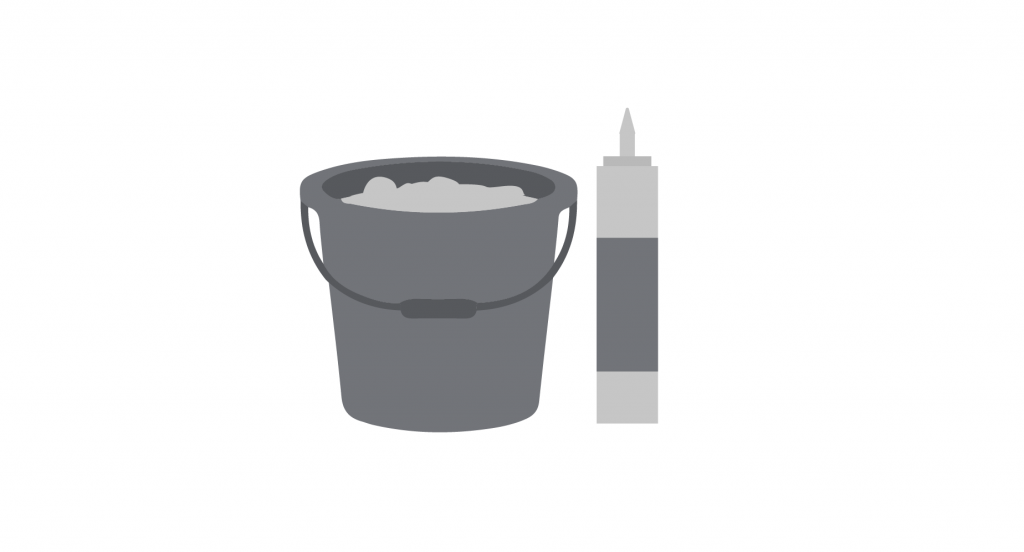When researching to find the best tiles for your latest project, the wide range of terminology used can be confusing. Here at Tile Superstore we’ve created a glossary of terms to help you understand exactly what you’re looking for.
A B C D E F G H I J K L M N O P Q R S T U V W X Y Z
A
Adhesive – the substance used to secure tiles to a surface, also known as bonding material.
Antique Finish – a rustic or distressed texture, created to replicate the effects of the ageing process. This finish can be achieved through the use of chemicals or machinery.
B
Bevelled Edge – on tiles or flooring, bevelled edges are edges that have been manufactured so that they slope down at a subtle angle instead of being perpendicular.
Biscuit – also known as bisque, or body, biscuit is a term used in reference to a glazed tile. The biscuit is the main part of a glazed tile that is typically manufactured from clay or porcelain, and the glazing is applied on top of the biscuit.
Brick Pattern – This is when tiles are laid in a particular way that resembles a traditional brick wall, at staggered intervals. This is also referred to as a broken joint, where each row is offset by half the length of a tile.
Brushed Finish – Slate tiles and other tiles can have a riven finish, which is typically quite hard. In comparison, a brushed finish smooths the surface of the tile down slightly, but without losing the natural style of the tile.
Butt Joint – A butt joint is where a field of tiles meets an adjoining wall, and the tiles are installed directly against the adjoining wall. This can also be used to describe where two tiles are installed with only a very small gap between them for grouting.
C
Caulk – This is a waterproof filler, used to seal joints and make them watertight. By using caulk you reduce the potential for mould and mildew to form.
Ceramic Tile – Ceramic tiles are made from a crystaline or part-crystaline structure, formed by heat from inorganic materials. Most common ceramic tiles are made from clays. Ceramic tiles are often softer and easier to cut than porcelain, and can be used on walls and floors with light to moderate traffic.
Chiselled Edge – The edge of a tile is chipped away using a tile, to create a rough and rustic aged appearance.
Crackle Glaze – A process whereby the glazing on top of the tile is deliberately cracked, which gives an aged effect and ensures each tile is unique. Originally this was done through thermal shock – tiles were removed from the kiln and immediately put into freezing temperatures, which cracked the glazing through shrinking. Now, glazing can be manufactured to shrink and crack during the drying process.
Cure – How long the tile setting material, e.g. grout or cement, must be left for in order to dry and harden before being used.
E
Extruded Tiles – these are tiles that are formed by pushing clay material through a mould in order to create the tile shape, instead of pressing the tile.
F
Field Tile – the most prominent, or often the largest tile installed when a pattern is being created with tiles of different shapes and sizes.
G
Granite – This is a natural igneous rock with coarse grain. Granite tiles are incredibly strong and durable, and can be polished to create a stunning and luxurious finish.
Grout – The substance used to fill gaps between tiles, and is typically a mortar or paste. Grout helps to prevent moisture from reaching the wall, and in turn prevents tiles from separating from the wall, as well as allowing tiles to expand and contract without causing damage.
Glazed Tiles – Glazed tiles have a thin coat of liquefied glass applied to the surface before they are put into the kiln. This creates a non-porous, hard surface when cooled, offering durability and stain protection.
H
Honed – a honed tile has a smooth flat surface with square edges, achieved by passing through high speed machines to refine the surface.
Herringbone – This is a laying design consisting of boards or tiles that are laid in a staggered V, or chevron pattern, most commonly used with small rectangular tiles. The style has a resemblance to the bones of a herring fish, which is where the name herringbone is derived from.
I
Impervious – when tiles absorb 0.5% or less of water, it is considered impervious. Impervious tiles are most commonly used in bathrooms and external areas.
L
Lipping – when tiles are installed on an uneven surface, one edge of a tile may be slightly raised compared with the adjacent tile. This most commonly occurs on larger tiles, or tiles installed in a herringbone pattern.
Listello/Liner – A thin strip or band of tiles that forms a decorative feature, primarily in walls, and can also be used to separate two different designs in one piece of tiling.
M
Marble – A natural stone product, marble is known for its shine, which is achieved through a polishing process.
Mosaic – The term used to describe a decorative piece of tiling that combines a number of small pieces of tiling in a range of shapes, sizes and colours.
N
Nippers – tile nippers are special pliers that are used to remove small bits of tile to create small or curved cuts for installation around an awkward feature.
Nominal sizing – A guide to the size or thicknesses of a number of tiles, bearing in mind that each tile may vary slightly in size of thickness due to the manufacturing process. They are considered as approximate dimensions as opposed to exact measurements.
P
Parquet – A style of flooring that consists of a number of tiles or wooden boards being arranged in a geometric pattern.
Polished Finish – To create a glossy surface on tiles, tiles can be polished using abrasive materials such as a fine diamond wheel, which gives tiles a high level of shine and brings out the natural colours.
Porcelain – Porcelain tiles are exposed to much higher temperatures during the manufacturing process than ceramic tiles. This means that porcelain tiles are generally denser, stronger and more resistant to chips and scratches, as well as being non-porous.
R
Reclaimed – Wood or tiles that have already been used in an old building or another application that have been removed, refurnished and repaired if needed, and are ready to be used on a new project.
Rectified – Rectified tiles are cut after the firing process. This makes them more evenly sized, with less variation between tiles, making them dimensionally stable. Their straight and even edges mean they can be installed with minimal grout lines.
Riven Finish – A riven finish is a natural finish, mostly found in slate tiles, that is produced as a result of splitting the rock along a natural cleavage line. Often chosen due to the natural textures produced, riven finish tiles may sometimes create an uneven surface.
Rustic Edge – Tiles that have a non-uniform, random edge. Rustic tiles are used when a handmade look is desired.
S
Sandblasted – Tiles are sprayed with sand at high speed, which creates a rough and non-slip surface.
Shade Variation – In all ceramic tiles, there will be shade variation between tiles within the same boxes. In many cases it is deliberate, and the shade variation is desired in order to show the natural beauty of the tiles.
Spacers – Pieces of plastic in cross shapes that allow an even separation gap between each tile during the installation process. There are a number of different sizes and thicknesses of spacers depending on the sized gap you’ll like to achieve between tiles.
Splashback – The area behind a sink, cooker or other appliances that protects the wall from being splashed or stained.
Straight Edge – Straight edged tiles have uniform and straight edges, creating a sharp and precise finish.
T
Tanking – the process of ensuring a wet room or bathroom is waterproof by adding a waterproofing membrane before tiling begins.
Threshold – Where one flooring level transitions to another flooring type and a finishing piece is applied.
Trim tiles – Tiles of a range of different shapes or sizes that help to achieve a covering of a specific or oddly shaped room or application.
Tumbled – a method applied to natural stone tiles, whereby tiles are placed in a large drum with sand, water and other rocks. The drum is then rotated and the other materials chip the tiles, which creates a smoother surface and distressed edges.
U
Underlayment – material that is laid above the subfloor before the main flooring is laid, to create a suitable installation surface.
V
Vitreous – Vitreous, semi-vitreous and non-vitreous tiles are different classifications of tile regarding water absorption. Non-vitreous tiles absorb more than 7% of water, so are used in dry rooms. Semi-vitreous tiles absorb between 3 and 7% of water, so are less porous, whilst Vitreous tiles absorb between 0.5% and 3% of water, making them even less porous due to the spaces between clay particles being filled with glass. Impervious tiles are the least porous tiles available, but vitreous tiles can also be used in bathrooms.
W
Wastage – When tiling a floor or wall area, the advice is to add an extra 10% onto the number of tiles required to allow for wastage during cutting, and for potential breakages. If a lot of cutting is required, the wastage should be increased to 15-20%.
Warping – when tiles change shape, also known as bowing. Tiles can often shrink during the firing process, which can make them curved and less flat. If this occurs tiles may be unusable as they will not create a flat surface.

















